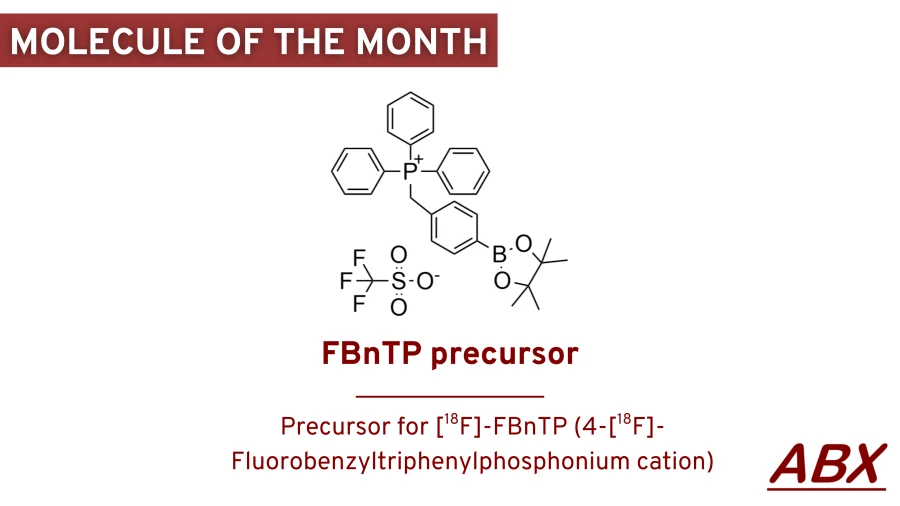Mitochondria are important regulators of cellular energy and metabolism and play a crucial role in numerous diseases including cancer and cardiac disease. They generate a membrane potential gradient providing energy required for ATP synthesis [1].
4-[18F]-Fluorobenzyltriphenylphosphonium cation ([18F]-FBnTP) is a positively charged lipophilic compound used as a negative membrane potential targeting PET-tracer for myocardial perfusion imaging (MPI) [2].The precursor (ABX prod. no. 7058) to produce [18F]FBnTP via copper-mediated one step 18F-fluorination reaction and its reference compound (ABX prod. no. 7059) are available for research and development.
[1] Mitchell, P. Evidence discriminating between the chemical and the chemiosmotic mechanisms of electron transport phosphorylation. Nature 1965, 208 (5016), 1205–1206.
[2] Zhang, Z. One‐step synthesis of 4‐[18F]fluorobenzyltriphenylphosphonium cation for imaging with positron emission tomography. J. Label Compd. Radiopharm 2016, 1–5.
4-[18F]-Fluorobenzyltriphenylphosphonium cation ([18F]-FBnTP) is a positively charged lipophilic compound used as a negative membrane potential targeting PET-tracer for myocardial perfusion imaging (MPI) [2].The precursor (ABX prod. no. 7058) to produce [18F]FBnTP via copper-mediated one step 18F-fluorination reaction and its reference compound (ABX prod. no. 7059) are available for research and development.
[1] Mitchell, P. Evidence discriminating between the chemical and the chemiosmotic mechanisms of electron transport phosphorylation. Nature 1965, 208 (5016), 1205–1206.
[2] Zhang, Z. One‐step synthesis of 4‐[18F]fluorobenzyltriphenylphosphonium cation for imaging with positron emission tomography. J. Label Compd. Radiopharm 2016, 1–5.
